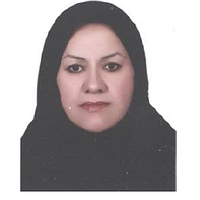Surviving of Probiotic Bacteria Lactobacillus casei and its Effect on the Quality and Sensory Evaluation of the Iranian White Cheese Produced by Ultrafiltration Technique
Author(s):
Abstract:
The survival of the probiotic strains Lactobacillus casei (ATCC 39392 Collection, Australia) was investigated in the Iranian white cheese produced by ultrafiltration technique. Four treatments of UF Iranian white cheese were produced: control I (C1), with a commercial starter culture mix including Lactoccocus lactis subsp. cremoris, Lactococcus lactis spp diacetylatis), control II (C2), with commercial starter culture mix and the probiotic L. casei, LC with a commercial starter culture mix and probiotic L. casei (uncapsulated) and LCC with commercial starter culture mix and probiotic L. casei capsulated with Sodium Alginate by extrusion method. The cheese samples were ripened at 8-12 oC for 60 days and the viability of cultures and also moisture, salt, protein, fat in solids, pH were determined biweekly. Cheese samples also were analyzed for sensory evaluation at the end of 60 days of ripening. At day 1, the log10 numbers of L. casei in the samples C2, LC and LCC were 8.61, 8.60 and 8.69 cfu g-1 respectively. These figures reached to log10 6.57, 7.01 and 8.20 cfu g-1 after 60 days of storage, respectively. The reduction was significant (P>0.01). The final numbers of L. casei, in all of the cheese samples were greater than the minimum numbers of the recommended therapeutic products (106-107 cfu /g). Moisture content and pH of all cheeses were decreased and salt and protein content increased during ripping, while the fat in Dry matter (FDM) content of all cheese were not change significantly during storage (P <0.01). The maximum and minimum range of loss of moisture at the end of ripening period was 6.1 and 3.34 % which belonged to LCC and C1 respectively. Therefore it was concluded that the type of starter affects the moisture content. The maximum and minimum range of loss of pH at the end of ripening period belonged to C1 and LC respectively and the loss of pH in the LCC was the least (9.26%). The sensory evaluation showed that there was no significant difference between the experimental samples from a texture and flavor point of view. While C2 acquired the high score of texture and flavor but not significantly. Therefore probiotic Lb. casei both form free and microencapsulated can be used successfully in Iranian white cheese produced by ultrafiltration technique without adversely affecting the cheese quality during ripening. Also L. casei can be use as starter culture in the Iranian white cheese produced by ultrafiltration technique.
Language:
Persian
Published:
Journal of Food Research (AGRICULTURAL SCIENC), Volume:19 Issue: 2, 2010
Page:
79
magiran.com/p721993
دانلود و مطالعه متن این مقاله با یکی از روشهای زیر امکان پذیر است:
اشتراک شخصی
با عضویت و پرداخت آنلاین حق اشتراک یکساله به مبلغ 1,390,000ريال میتوانید 70 عنوان مطلب دانلود کنید!
اشتراک سازمانی
به کتابخانه دانشگاه یا محل کار خود پیشنهاد کنید تا اشتراک سازمانی این پایگاه را برای دسترسی نامحدود همه کاربران به متن مطالب تهیه نمایند!
توجه!
- حق عضویت دریافتی صرف حمایت از نشریات عضو و نگهداری، تکمیل و توسعه مگیران میشود.
- پرداخت حق اشتراک و دانلود مقالات اجازه بازنشر آن در سایر رسانههای چاپی و دیجیتال را به کاربر نمیدهد.
In order to view content subscription is required
Personal subscription
Subscribe magiran.com for 70 € euros via PayPal and download 70 articles during a year.
Organization subscription
Please contact us to subscribe your university or library for unlimited access!



